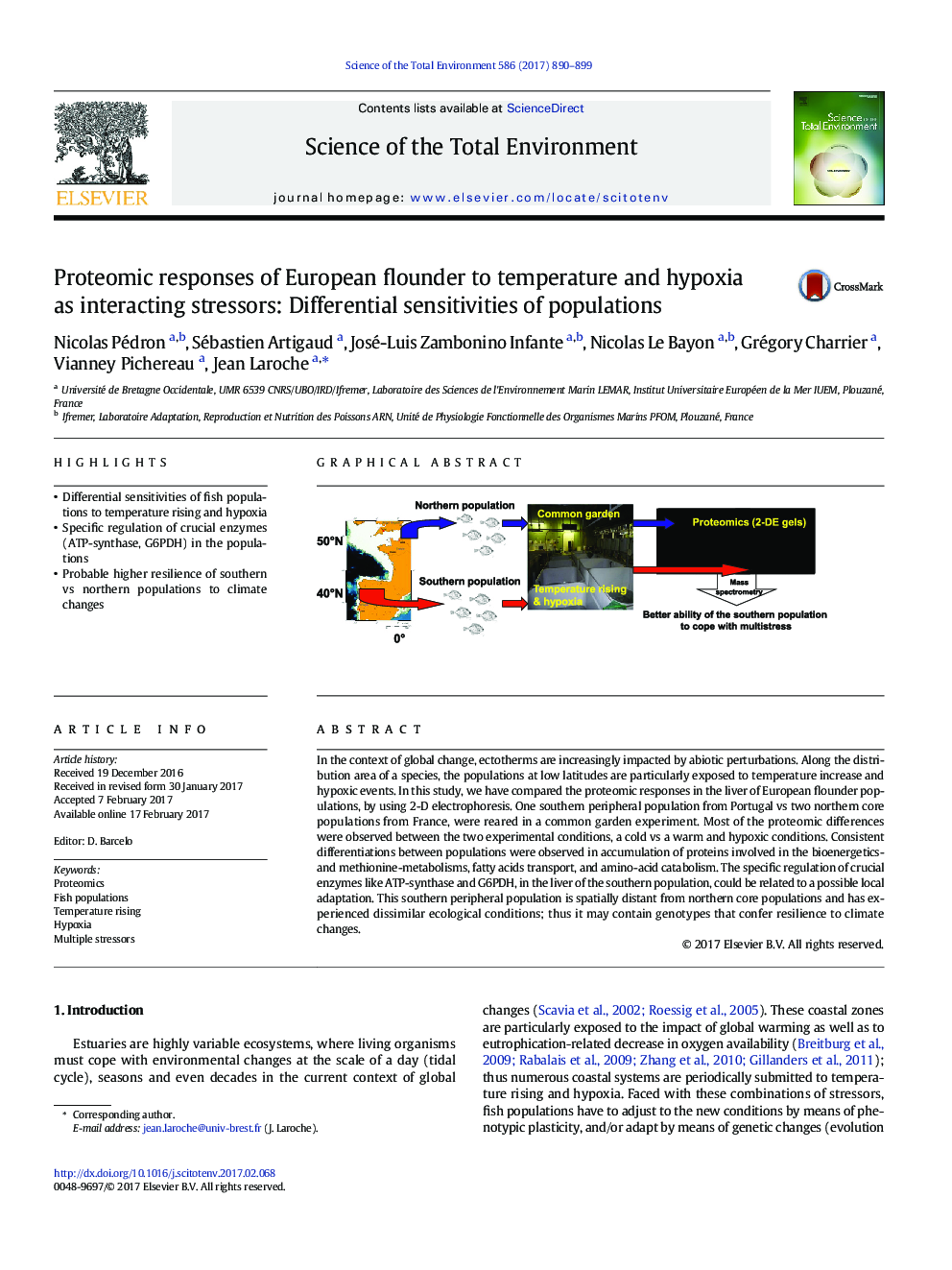| Article ID | Journal | Published Year | Pages | File Type |
|---|---|---|---|---|
| 5751182 | Science of The Total Environment | 2017 | 10 Pages |
â¢Differential sensitivities of fish populations to temperature rising and hypoxiaâ¢Specific regulation of crucial enzymes (ATP-synthase, G6PDH) in the populationsâ¢Probable higher resilience of southern vs northern populations to climate changes
In the context of global change, ectotherms are increasingly impacted by abiotic perturbations. Along the distribution area of a species, the populations at low latitudes are particularly exposed to temperature increase and hypoxic events. In this study, we have compared the proteomic responses in the liver of European flounder populations, by using 2-D electrophoresis. One southern peripheral population from Portugal vs two northern core populations from France, were reared in a common garden experiment. Most of the proteomic differences were observed between the two experimental conditions, a cold vs a warm and hypoxic conditions. Consistent differentiations between populations were observed in accumulation of proteins involved in the bioenergetics- and methionine-metabolisms, fatty acids transport, and amino-acid catabolism. The specific regulation of crucial enzymes like ATP-synthase and G6PDH, in the liver of the southern population, could be related to a possible local adaptation. This southern peripheral population is spatially distant from northern core populations and has experienced dissimilar ecological conditions; thus it may contain genotypes that confer resilience to climate changes.
Graphical abstractDownload high-res image (254KB)Download full-size image
